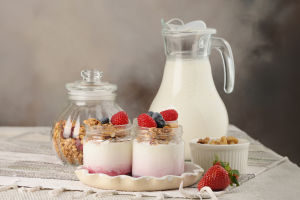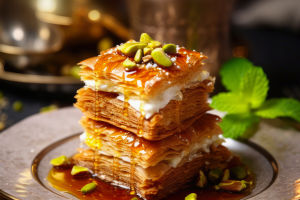We've all seen them—those glossy, colorful little French macarons lined up in bakery windows and filling our Instagram feeds. But making them at home? That can feel intimidating.
Good news: we're here to guide you step by step! With the right tips, you can absolutely make your own delicious French macarons—even as a beginner.
Today, we'll walk through a simple recipe and share key tips so you can master these charming treats. Ready to bake together? Let's begin!
What Makes Macarons Special?
First, what exactly makes a macaron so beloved?
These delicate cookies consist of two crisp, almond-based shells sandwiched around a creamy filling. They are light, chewy, and subtly sweet—with endless flavor possibilities.
We love how versatile macarons are: classic vanilla, zesty lemon, rich chocolate, floral lavender... the list goes on. They also make wonderful gifts or festive additions to any table.
Essential Ingredients
Here's what we'll need for the macaron shells:
• 100g almond flour (finely ground)
• 100g powdered sugar
• 75g egg whites (about 2 large eggs), aged overnight
• 75g granulated sugar
• Gel food coloring (optional)
For the filling, we suggest a simple buttercream:
• 100g unsalted butter (softened)
• 150g powdered sugar
• 1-2 tablespoons milk or cream
• Flavoring of your choice (vanilla, lemon zest, raspberry puree, etc.)
A note from professional bakers: aging your egg whites (leaving them uncovered in the fridge overnight) helps create the stable meringue needed for perfect macarons.
Preparing the Shells
Here's how we create the iconic macaron shells:
1. Sift together almond flour and powdered sugar. This step ensures a smooth texture.
2. In a clean bowl, whip aged egg whites until foamy. Gradually add granulated sugar while whipping to stiff, glossy peaks.
3. Gently fold the dry ingredients into the meringue using a spatula. This stage is called macaronage. The batter should flow like thick lava and form ribbons when lifted.
4. Add gel food coloring if desired and fold it evenly into the batter.
Be gentle! Overmixing will deflate the batter, and undermixing will cause cracks during baking.
Piping and Resting
Now we prepare our baking sheet:
1. Line a baking sheet with parchment paper or a silicone mat.
2. Using a piping bag with a round tip, pipe small circles about 3–4 cm in diameter.
3. Tap the baking sheet firmly on the counter a few times to release air bubbles.
4. Let the macarons sit at room temperature for 30–60 minutes, until a skin forms on top. This helps create the signature "feet" during baking.
Baking
Time to bake:
1. Preheat your oven to 150°C (300°F).
2. Bake the macarons for 12–15 minutes, one sheet at a time. The tops should be set, and the feet should be visible.
Allow them to cool completely before removing from the parchment paper.
Making the Filling
For a simple buttercream filling:
1. Beat softened butter until creamy.
2. Gradually add powdered sugar and beat until fluffy.
3. Add milk or cream to reach the desired consistency.
4. Mix in your flavoring of choice.
You can also use ganache, jam, or curd for variety.
Assembling the Macarons
Finally, let's bring it all together:
1. Pair up shells of similar size.
2. Pipe a small amount of filling onto one shell.
3. Gently sandwich with another shell.
We recommend storing the assembled macarons in the fridge for 24 hours. This allows the flavors to meld and improves texture.
Common Pitfalls & How to Avoid Them
Even pros say that macarons take practice—don't worry if your first batch isn't perfect. Here are some common issues and tips:
• Hollow shells: Often caused by over-whipping the meringue or baking at too high a temperature.
• Cracked tops: The batter was under-mixed or the resting time was too short.
• No feet: The batter may have been over-mixed or under-rested.
Remember—practice makes progress. Each batch teaches us something new.
Expert Insight: The Science Behind Macarons
According to food scientist Shirley Corriher, the key to a good macaron lies in the protein structure of the meringue and the careful balance of moisture and air in the batter. The resting period allows the surface to dry, so when baked, the expanding air creates the signature rise and feet.
Professional pastry chefs also stress the importance of precision—weighing ingredients with a digital scale and controlling humidity in the kitchen can greatly affect results.
Let's Bake Together!
And there you have it—a beginner-friendly guide to making your very own French macarons. It may take a few tries, but that's part of the fun! We encourage you to experiment with flavors and colors once you get the hang of it.
Have you baked macarons before? If so, what's your favorite flavor? If not, why not give it a try this weekend? We'd love to hear about your macaron journey—share your results and let's inspire each other to keep baking sweet memories. 💕


